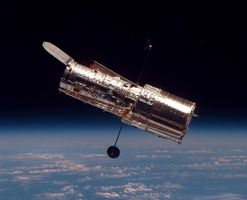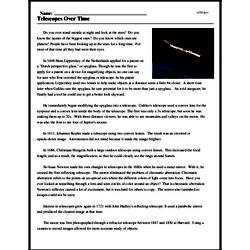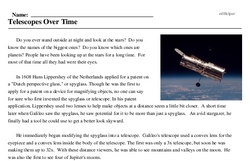Telescopes Over Time
Do you ever stand outside at night and look at the stars? Do you know the names of the biggest ones? Do you know which ones are planets? People have been looking up at the stars for a long time. For most of that time all they had were their eyes.
In 1608 Hans Lippershey of the Netherlands applied for a patent on a "Dutch perspective glass," or spyglass. Though he was the first to apply for a patent on a device for magnifying objects, no one can say for sure who first invented the spyglass or telescope. In his patent application, Lippershey used two lenses to help make objects at a distance seem a little bit closer. A short time later when Galileo saw the spyglass, he saw potential for it to be more than just a spyglass. An avid stargazer, he finally had a tool he could use to get a better look skyward.
He immediately began modifying the spyglass into a telescope. Galileo's telescope used a convex lens for the eyepiece and a convex lens inside the body of the telescope. The first was only a 3x telescope, but soon he was making them up to 32x. With these distance viewers, he was able to see mountains and valleys on the moon. He was also the first to see four of Jupiter's moons.
In 1611, Johannes Kepler made a telescope using two convex lenses. The result was an inverted or upside-down image. Astronomers did not mind because it made the image brighter.
In 1686, Christiaan Huygens built a large outdoor telescope using convex lenses. This increased the focal length, and as a result, the magnification, so that he could clearly see the rings around Saturn.




